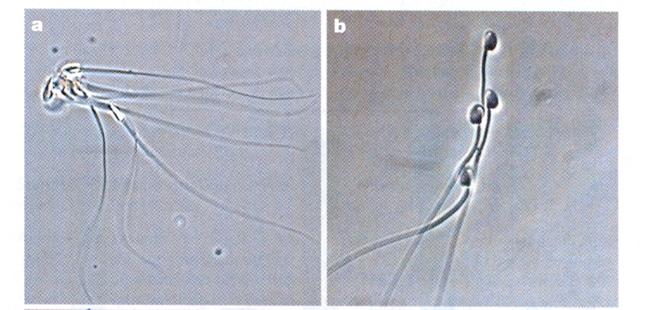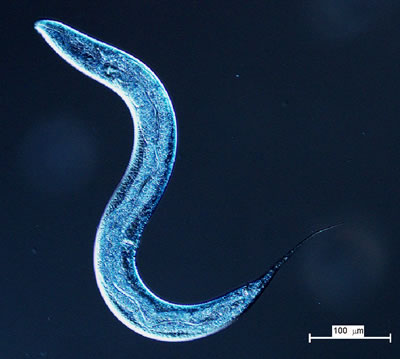The study of worms is now a favorite pastime of mine. I have found that worms are everywhere. They are in the ground, in the air, in our blood, our bones, and on our skin. Some we can see, and some we cannot see. In fact, before we humans develop our arms, legs, eyes and ears in the wombs of our mothers where we begin the transformation into a being or fetus that looks like a modern-day human, we actually look like worms because we descend from sperm, which is in reality a type of worm.
in our blood, our bones, and on our skin. Some we can see, and some we cannot see. In fact, before we humans develop our arms, legs, eyes and ears in the wombs of our mothers where we begin the transformation into a being or fetus that looks like a modern-day human, we actually look like worms because we descend from sperm, which is in reality a type of worm.
This is why in the bible it is said, And from these worms God made angels. The Lord said of Himself: “I am a worm and not a man” (Ps 21:7)or in the Hebrew Bible: “Man that is a worm (rimmah), and the son of man which is a maggot” (tole’ah).
Let me explain this as simple as possible for those of you worms out there who do not understand what I AM saying.
When a man has impregnated a woman, he releases his sperm into her vaginal canal, to where it then makes the journey through the cervix and to the follopian tubes where the eggs are released. In one single drop of sperm, there are literally hundreds of millions of thin symmetrical shaped worms swimming around as if they have a life of their own. It is these millions of worms who compete with one another to enter into the woman’s egg. A competition of survival of the fittest, where only the toughest and fastest of the worms wins the fight to earn the right to become a human.
This fight of the survival of the fittest worm sperm is now being documented by scientists. This is called sperm competition where these worms are known as “kamikaze sperm” or “killer sperm.” These terms are used to refer to the competitive process between spermatozoa of two or more different males to fertilize an egg of a lone female. This is often compared to having tickets in a raffle; a male has a better chance of winning (i.e. fathering offspring) the more tickets he has (i.e. the more sperm he inseminates a female with).(Wikipedia)
For example, Syracuse University researchers have been studying sperm, and according to a recent study of sperm fights by biologist Scott Pitnick who told online publication, The Scientist: “We were baffled at first by the incredible activity of sperm.” Biologist Tommaso Pizzari of the University of Oxford said, “the paper is really the methodological breakthrough that enables us to capture a glimpse of sperm competition in action. What happens inside the female has remained, up till now, a bit of a black box.”
Syracuse University researchers actually filmed these worm sperm fights in action, and posted the video on Youtube for the world to witness. In the video Drosophila sperm compete in the genitals of females. Sperm from one male glows green in the dark and sperm from another glows red.
Also, according to an article that came out yesterday in the LA Times, “Killer sperm: Sexual ‘arms race’ takes its toll on females;”
Sure, nobody really thinks of worm sperm as being cute and cuddly — assuming one thinks about them at all — but who would have thought they were stone cold killers?
In a paper published Tuesday in PLOS Biology, a team of researchers who apparently enjoy watching nematodes get jiggy were shocked to learn that male sperm will conduct search-and-destroy missions on females and hermaphrodites of other worm species.
Instead of simply fertilizing the partner’s eggs and being done with the whole exercise, the sperm of male Caenorhabditis nematodes who mate with other species will not only bully “milder” sperm and cause sterilization, they’ll also destroy body tissues like a metastasizing cancer, authors say.
“Our findings were quite surprising,” co-author Asher Cutter, an evolutionary biologist at the University of Toronto, said in a statement.
The study provides new insight into assortative mating — the tendency for animals to reproduce with similar creatures — as well as the evolutionary pressures posed by “aggressive sperm.”
“Punishing cross-species mating by sterility or death would be a powerful evolutionary way to maintain a species barrier,” senior study author Eric Haag, an evolutionary biologist at the University of Maryland, said in a statement.
Animals of the same genus but different species may mate and produce offspring, but that animal is usually sterile. An example is the mule — which occurs when you breed a horse and a donkey.
The case of the worms, however, is more drastic.
Researchers mixed and matched three Caenorhabditis species, cross-breeding male, female and hermaphrodite worms — worms capable of producing both sperm and eggs in order to reproduce.
The males, researchers said, mated indiscriminately when given the opportunity. The hermaphrodites however would attempt to avoid copulation by crawling away from the breeding area when they sensed a male of another species.
Study authors learned why this was the case when they examined sterile and dying worms under a microscope. Fluorescent stains showed that once the male sperm had entered the hermaphrodite worm, they overpowered the hermaphrodite’s smaller sperm and blocked ovulation.
After that, things just got worse. The aggressive sperm invaded the worm’s ovary, and caused its eggs to mature prematurely. The sperm then traveled deeper into the worm’s body, causing tissue damage and, eventually, death.

Moe is the founder of GnosticWarrior.com. He is a father, husband, author, martial arts black belt, and an expert in Gnosticism, the occult, and esotericism.









Dude…your zeal for knowledge is amazing and greatly appreciated…by me anyway. I’m sure opinions vary.
Thanks for the kind words Brother! That truly means a lot to me. Yes my friend, opinions vary widely from I’m an angel to I’m a demon or the devil. Oh well, nothing new under the planet Jupiter 😉 I appreciate your support.